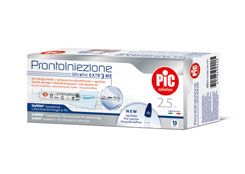
How many types of injection are there?
Let's learn more about the varied world of parenteral administration via injection: from intramuscular to endovenous methods, each type of injection has its own associated drugs and relative absorption rates of their active ingredients. Let's discover them together.
Intramuscular injections
For injections into muscle tissue, 5-10 milliliter syringes with 6-8 centimeter needles are used - or longer for oil-based solutions - in order to penetrate deeply. Drugs that are injected by intramuscular injection act more quickly than ones taken orally: the injection is done into muscle tissue that's rich in blood vessels in which to circulate the drug in the blood.
Intradermal injections
Intradermal injections, or ones which don't go below the dermis, are used for vaccinations. They also help to discover if you have allergies via tests for sensitivity to allergens and they provoke useful intradermal reactions when diagnosing diseases like tuberculosis and brucellosis. What’s needed to do them? Maximum 1 milliliter syringes - for slow-release drugs - with short needles up to 1.5 centimeters.
Subcutaneous injections
This type of injection is done with a short and fine small needle (1.5 -2 centimeters) and a 2 or 2.5 milliliter syringe. It's recommended for all those substances that need to be absorbed very slowly. A couple of examples? Morphine and atropine. You administer it by inserting the needle almost parallel to the skin until you reach the subcutaneous tissue... and that's where the liquid is deposited.
Endovenous injections
This is a technique where a substance is introduced directly into the circulatory system with a needle inserted into an easily accessible vein: usually these are just below the crook of the elbow or in the lower arm. The main benefit of endovenous injection is that the drug gets administered right into the vein... so any issues of absorption are overcome.












